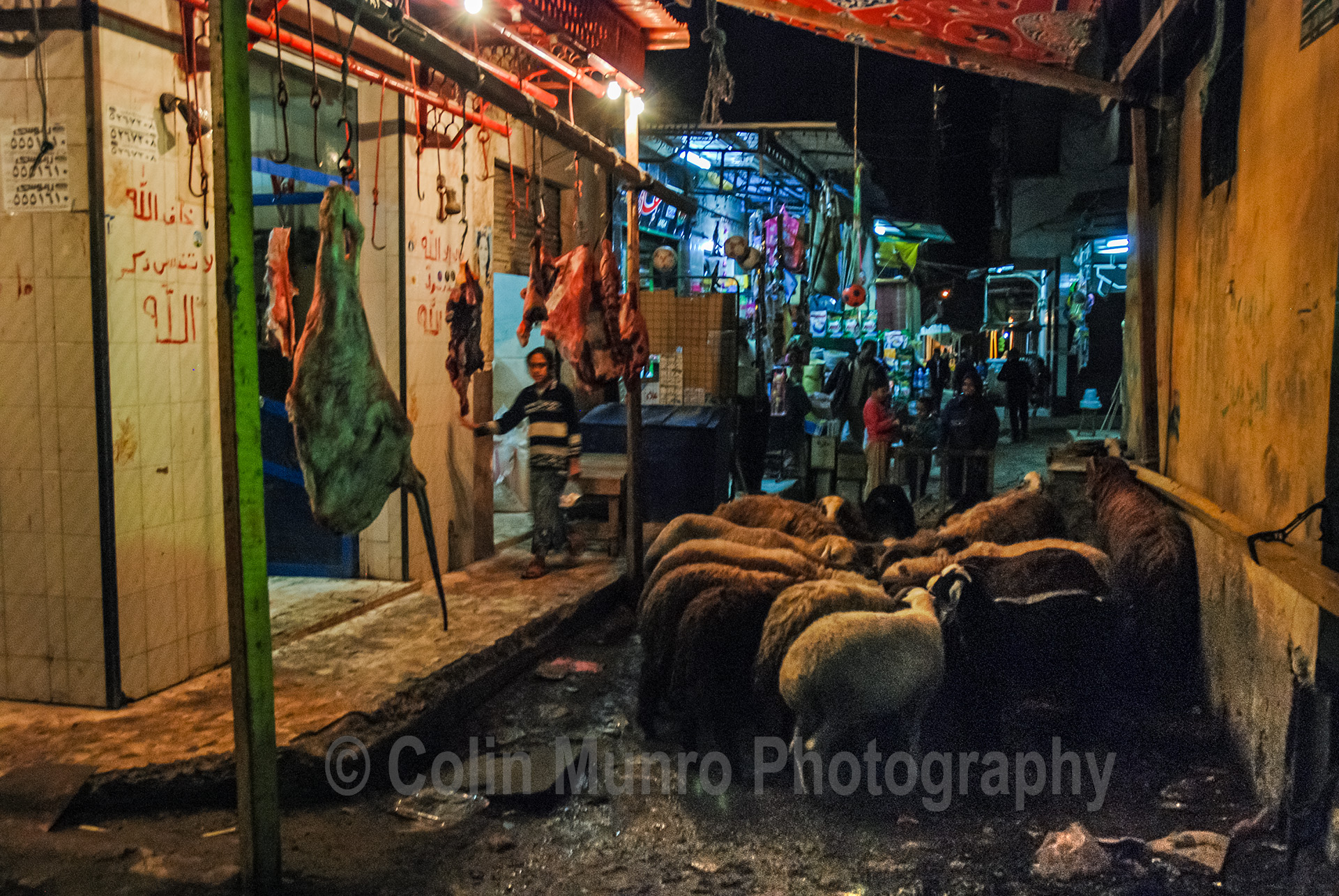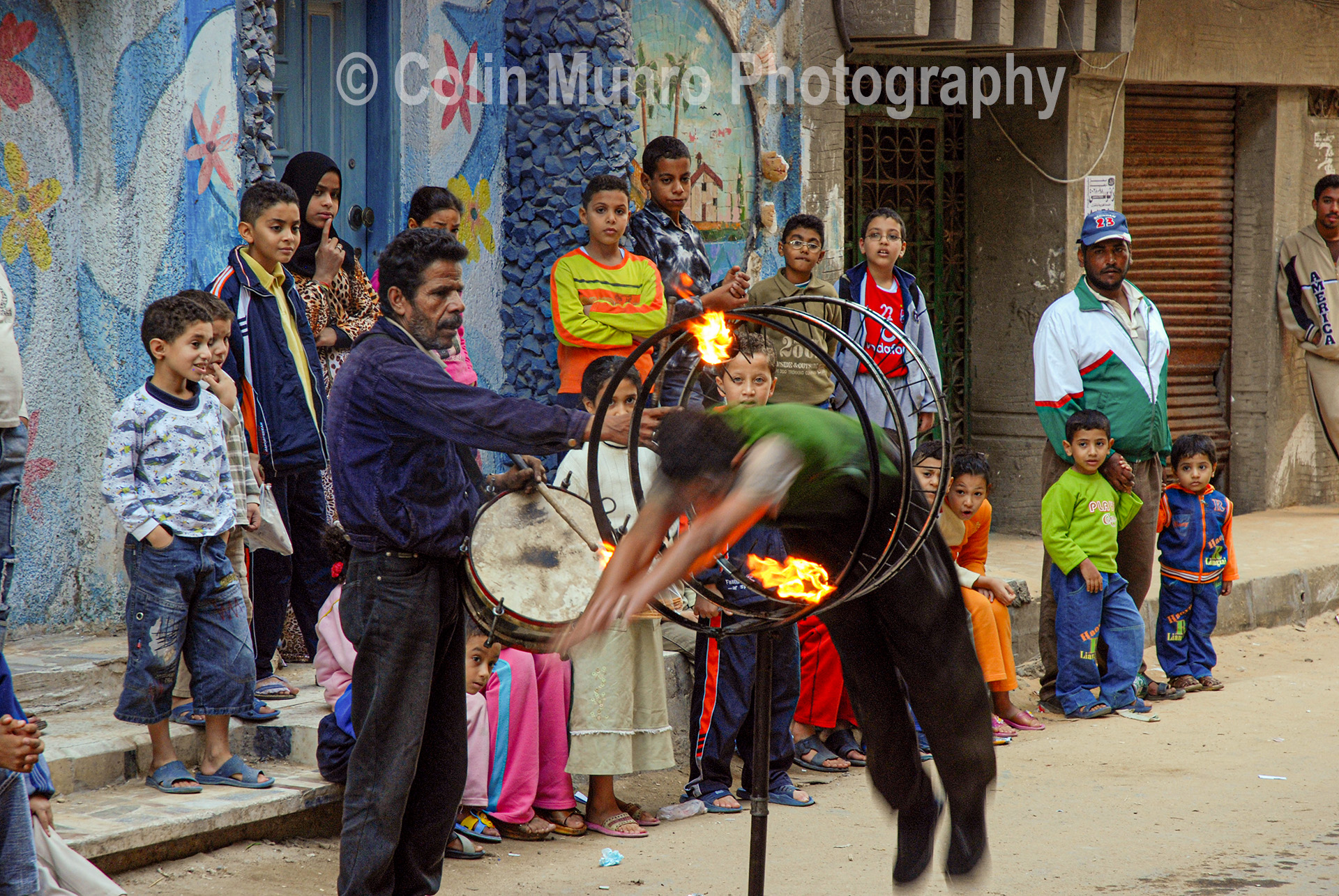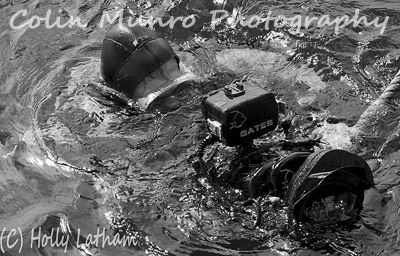Christmas in Abu Qir
A little over ten years ago I spent Christmas in the small Egyptian seaport of Abu Qir. This was not a planned stopover, even in summer Abu Qir is not on any tourist route. Abu Qir is a freight and naval port situated at the end of a spindly headland jutting out into the Eastern Basin of the Mediterranean. Nitrogenous fertiliser production is the main industry in Abu Qir. Within the harbour it is stored in vast warehouses awaiting shipping. Fertiliser dust lines the trucks and blows into all crevices along the quays. After any time spent there it fills the tread in your boots; when the wind blow a light dusting coats most surfaces. Winter rains easily penetrate the warehouses and wash across the roads. On contact with water the fertiliser, presumably ammonium nitrate, decomposes to release ammonia fumes powerful enough to make you catch your breath and set your eyes streaming. This may be one factor in the lack of tourists or tourism infrastructure. Grain is a major import here. All day long one can watch trucks pull up beneath a large hopper. A fountain of grain cascades into the truck from on high whilst the hapless driver, or driver’s mate, stands beneath it and levels out the accumulating pile with a broom. This has to be one of the worst jobs in the world. With only a rag tied around his nose and mouth he is mostly obscured within a blizzard of wheat dust and chafe. Standing a hundred metres or so away the dust filled my nose and I couldn’t help but wonder how much of his lungs remain functional.
A dusty boulevard leads away from the port, becomes a tarmac road and soon after hooks up with the Trans-African Highway, the artery running across the top of Africa. Some twenty odd kilometres to the West, in its International Highway coastal detour, it skirts Alexandria, then joins the Trans-African Highway proper (TAH1 to be precise) heading endlessly West to finally hit the buffers at Dakar, over 8000 kilometres distant. To the East the route is much shorter. The Highway threads its way along the narrow strips of land that separate the Mediterranean proper from the coastal lagoons of the Nile Delta to Port Said on the Eastern bank. The intrepid can continue a further 240 kilometres along the edge of the Sinai Peninsula, before being stopped at the barricade at the Rafah border crossing into the West Bank. This is currently closed by Egypt, apparently under pressure from Israel.
Abu Qir is a small spike off this grand conduit linking most of the great cities of North Africa. The area is growing in significance with the current development of the Abu Qir gas field but the small town remains mostly unaffected. The main boulevard is wide and rather elegant, if pot-holed. In late December the sun still blazed, but every now and then the town was hit by sudden downpours that created great lakes over a foot deep, spanning road and pavement. Despite the inconvenience of having to carefully pick your way through these waterways the street was still bustling with people. Once the rain subsided sheets of polythene would be whipped back to reveal wooden stalls creaking under the weight of vast piles of aubergines, oranges, bananas, broad beans, tomatoes, courgettes, carrots, peppers and potatoes. Most of Egypt’s agricultural land is located in the fertile and well irrigated Delta region, and Abu Qir’s market stalls are testament to the productivity of the region.

Though the Delta is not without problems, since the construction of the Aswan dams upstream the fertility has declined as fewer nutrients flow into the lower reaches of the Nile; pumping groundwater to supply the growing urban population has lead to salt water intrusion rendering some land unusable for crop growing whilst urban sprawl is rapidly reducing the land available for cultivation. Perhaps the greatest threat to the region is global warming. Much of the delta is less than two metres above sea level. Current predictions suggest the area would suffer a double whammy: extensive loss of cultivated and developed land through sea level rise and increasing groundwater salinity, exacerbated by reduced freshwater inputs due to increased evaporation. Yet as I waded across a stretch of rainwater-flooded road, reduced freshwater inputs seemed a rather distant concern, but perhaps gave an indication of what future conditions may look like as the Mediterranean starts to encroach.
I had arrived in Abu Qir to work based on a local boat. Being a naval port they were rather touchy about cameras. Any found were confiscated, and wandering around the port with a camera would undoubtedly invite the attention of the military police. Although I have no interest in naval secrets I suspect that would cut little ice. Getting my camera aboard the boat was relatively straightforward. I simply gave it to my local taxi driver, who kept it beneath his jacket while we were searched. A wise move I thought as I hauled out my bags and watched the sentries carefully going through their contents at the roadside.
Stormy weather meant we spent a lot of time sitting in port, and so I was able venture out into the local town. However, getting my camera out with me was slightly trickier. As I was simply walking in to the local town I had to walk past the guards without the assistance of a trusted local. I did, however, have baggy trousers and a set of juggling balls. With juggling balls stuffed in my trouser pockets and digital SLR and zoom lens tucked in the front of my underpants I sauntered, as casually as possible given my attire, slowly towards the port gate. I walked slowly, partly because a faster pace required me to waddle, suggesting I had an incontinence problem, and partly because any sudden movement was likely to send my camera crashing to the ground down my trouser leg. With a big grin and a ‘kayfa ??lak’ I passed the guards my passport and jacket, which I had draped over my arm to conceal my odd appearance. This immediately drew attention to the bulges in my trousers and a request to empty my pockets. I withdrew the juggling balls being careful not to dislodge anything else which, naturally, led to requests for a demonstration. A twenty second flourish of my rudimentary juggling skills, a few handshakes and I was allowed on my way without further inspection.
The main boulevard, Abo Qeer, has a relaxed and rather timeless feel. There are of course trucks rolling to and from the port, and aged taxis that will take you to Alexandria much faster than any sane person would wish to travel on that road. But there is almost as much non-motorised transport. A popular means of transport by locals is horse-drawn cabs. These are marvellously inventive crosses between Victorian ‘Clarence’ carriages, gypsy caravans and buggies with jacked-up suspension. They are frequently drawn by horses so skinny they appear all but two-dimensional.

Horses, mules or donkeys pulling carts loaded with cauliflowers, car axles or boisterous kids clip-clop past almost as frequently as internal combustion powered vehicles. They may exist, but I found no supermarkets, no Ronald MacDonald, no KFC, no chain stores, no glitzy glass and strip-lighting shop fronts. Indeed mains lighting was strictly limited; most shops lit only by kerosene lanterns and shopkeepers smiles. Scattered amongst the fruit and vegetable stalls were the obligatory chai and coffee houses, where groups of men stared seriously at backgammon boards or puffed on shisha pipes filled with fruit and molasses soaked tobacco and watched the World go by.

If one ventures away from the main road the look of the town changes abruptly. Turn west and you enter a maze of narrow alleyways between tall tenements. Flocks of small chocolate-fleeced sheep wander about, often venturing into the open-fronted butchers’ shops where freshly skinned carcasses of their brethren hang from great meat hooks.


As I wandered these alleyways I came across a street performer. Forty or fifty young children sat in doorways or hung from first floor windows, watching wide-eyed from between lines of washing. The act consisted of a showman, his younger assistant, a small dog and a spiked, steel triple hoop rigged on a stand in the centre of the alley. It was far too interesting an event to miss, but taking pictures in such situations is never easy. You do not want to offend anyone; nor do you want to detract from the main event. From experience I knew that pulling out a large camera was likely to have most of the children turn there attention away from the performers and focus on the westerner with the camera. A scrum of children shouting ‘take my picture’, leaving the show with no audience, was most definitely not what I wanted. I sat down in a doorway some distance back and waited for the initial curiosity to subside. I then casually took out my camera from under my jacket and sat it on my lap without looking at it.

With minimal props the showman knew just how to work an audience; pacing slowly and deliberately back and fore he prepped the dog, which it seemed would be the star performer. All the while his sidekick beat out a roll on a small side drum. After a few minutes I was able to catch the showman’s eye. I lightly tapped the top of my camera and looked at him enquiringly. He gave a slight nod then turned his attention back to his canine protégé. Dressed in dapper brown trousers and waistcoat, with a rather dashing red scarf around its waist, the little white dog bounced into the centre of the street. Upon a slight hand gesture from the showman it rose onto its hind legs and tottered around to the beat of the drum. The drum beat increased in vigour and the audience clapped in time as the tiny dancer jigged to the beat in a slightly unbalanced manner, not altogether unlike a slightly tipsy girl dancing in way-too-high stilettos. To a round of applause the showman swept his star performer into his arms and carried him to the side where he carefully wrapped him in a damp blanket to cool off.

Returning to centre stage the build up for the finale commenced. Two flaming torches were produced with a theatrical flourish and used to light three similar-looking torch heads within the metal hoops. As I gazed at the flaming hoops I realized they were actually bicycle wheel rims bolted on to the tubular stand for a fan or similar. The inward pointing spikes were six-inch nails punched through the spoke holes. For a moment I thought the diminutive pooch might be expected to leap through the fiery ring, hence the dampening blanket, but as the ring was raised to at least three times his height I dismissed that idea. Surely that would be a feat beyond even a dancing dog? The showman paced back and fore in front of the hoops, the drum roll intensified, the dog watched from beneath his blanket. I was impressed, not only was the showman going to leap through a flaming spiked hoop it appeared his shoulders would only just fit through, such was his confidence he had not even bothered to remove the bulky denim jacket or heavy boots he was wearing. With his young audience worked up into a frenzy of anticipation, he stood fifteen paces back from the ring and gave a nod. At this his young accomplice un-slung his drum, walked smartly to the centre of the street broke into a run and performed a perfect dive through the ring of fire. The crowd burst into spontaneous cheering, the performers bowed graciously and a collecting box was passed around. I dug a handful of piastres from my pocket as the box reached me, took a few pictures when asked to and showed the results in the camera’s LCD screen to a chorus of giggles and screams. After congratulating the performers and thanking them for their indulgence I decided it was time to wander on.
Fine Art Landscape and Wildlife Prints
If you enjoyed this story why not check out my other blogs. I write about travel, the environment, marine biology, diving and wildlife. You may also want to check out my photographic prints. These can be viewed on my main site www.colinmunrophotography.com and include landscapes from around the World, people of the World, marine life and other wildlife. The prints are only available through my website, each one individual processed and made to order. This includes fine art giclee prints, limited edition prints and canvas wraps. I use only the best, carefully selected print houses employing the finest papers and printing processes to ensure image fidelity and longevity.



